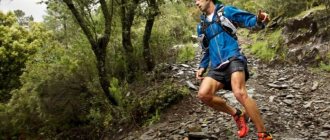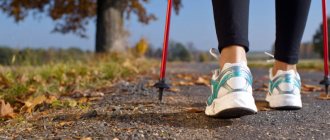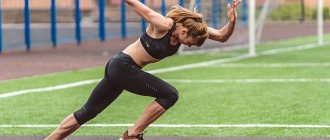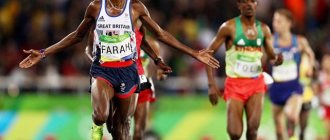Share
A calorie is a unit of energy that is produced by the body from food. For example, the calorie content of 1 gram of protein and carbohydrates is 4 calories, and 1 gram of fat is 9 calories. Calories are necessary for the human body to function properly. Even at rest, the body consumes energy to keep organs in working order. An adult needs an average of 1800–2600 kcal, an athlete – 3500 kcal per day.
Calorie consumption per kilogram of weight
Let's take walking for an hour as a basis. Let's calculate how many calories you can spend per kilogram of body weight. Driving on a flat road at a speed of 4 km/h will give an effect of 3.2 calories. If you increase the speed to 6 km/h, you will burn 4.5 calories. The fastest walking pace of 8 km/h will give the best result - 10 calories.
Popular articles for weight loss and health
Chia pudding: recipe with coconut milk
Diet 5 spoons: menu for the week real reviews
Homemade granola diet recipe
One Glass Diet
Climbing up an inclined road at a speed of 2 km/h, a person spends 6.4 calories per kilogram of body weight. If you take a casual walk in the fresh air, you can burn 6.4 calories in an hour. By doing race walking, you will be able to burn 6.8 calories.
https://youtu.be/pJ6b8K4jq1c
How to run 1 km by creating a training program: practical tips
To quickly increase running speed, you need simultaneous endurance and strength . If you decide to focus on running, then it is optimal to choose 3 days a week for varied training. At the same time, be sure to insert 1-2 days of proper rest between classes.
- The first lesson should include endurance training. Choose the maximum distance and methodically develop your running technique. It is important to gradually get rid of breaks in the running process, improve the quality and uniformity of movement. Endurance is gained by running at a slow or medium pace; rushing would be inappropriate here.
- The second session should include full development of muscle strength and explosiveness in the calves. This includes leg training classes (squats, goose steps, jumping jacks, etc.). The exercises will improve coordination and improve your running power.
- The third session combines a full-fledged endurance workout with a noticeable acceleration of the pace at the end of the session.
This type of training will allow you to qualitatively combine the development of various indicators. The combination of strength, endurance and explosive push will help you to quickly cover the distance.
An example of such a mode is the following program:
| Class | Training plan |
| 1. | 3 km running at a measured pace + 100 squats |
| 2. | 30 squats, 10 jumps, 50 m goose step, 400 m run (circuit training in 4 circles) |
| 3. | up to 3 km running at a uniform pace + 2 fast races of 500 m |
Running and exercises should be accompanied by detailed training in proper breathing. It should be deep, measured and carried out simultaneously by the lungs and the diaphragm.
Gradually add new exercises and increase the mileage, bringing long distances to 10 km, and short runs to 1 km. The exact program should be tailored to your individual characteristics , so follow the general recommendations and listen to your body. Hard work will help you develop the ability to run a kilometer in 3 minutes over a two-month training period. A relaxed regime will allow you to develop these indicators in 4-5 months.
Video. How to pass the 1 km running standard
The 1 kilometer running standard is passed in many educational institutions. In addition, this distance is included in many international athletics tournaments.
The content of the article:
What energy costs when walking - review
In order to understand how many calories are burned when walking 1 km, you need to take into account your weight and speed of movement.
- A regular walk at a speed of 2-3 kilometers per hour will require 200 calories for the average body.
- Race walking requires greater speed and, accordingly, leads to more serious energy expenditure. At a speed of 5 km per hour, a person will spend 300-400 calories.
There is also the option of using different walking methods, which allow you to burn more calories and keep your body toned. This increases the overall physical development of the body.
Features of 1 km running
Running is an effective way to keep your legs strong and healthy. Short races of 1 km are the beginning of the development of endurance and the basic step in training. It’s quite easy to gain distance even for beginner athletes with zero physical fitness. A more advanced training method is long endurance running or running 1 km in a short time.
Running 1 kilometer in 3-4 minutes is a task for a pro. Developing such speed comprehensively enhances many nuances of physical development :
- Endurance.
- Cardio endurance.
- Explosive leg power.
- Speed.
Intense running is a basic exercise for developing strength, fighting skills and high-speed sprints. It is perfectly complemented by outside training in other practical systems and slow long-distance running. And it will still give you the answer to the question “how to run 1 km?”
Types of walking
Steps or climbs in the mountains will be useful. This technique perfectly develops the muscles of the body and burns much more calories. Monitoring your heartbeat is a prerequisite.
Excessive strain on the heart can have a detrimental effect on your health.
Nowadays Nordic walking is very popular. It involves the use of special sticks, which must fully correspond to the person’s height. Nordic walking burns 40% more calories than regular walking and is the safest method for losing excess weight.
What is a hectare of land?
Hectare
- a unit of area in the metric system of measures used for measuring land plots. Field areas are measured in hectares (ha). A hectare is the area of a square with a side of 100 m. This means that 1 hectare is equal to 100 • 100 square meters, that is, 1 hectare = 10,000 m 2.
Abbreviated designation: Russian ha, international ha. The name “hectares” is formed by adding the prefix “hecto.” » to the name of the area unit “ar”
- A hectare is a unit of measurement of the size of a plot, which is equal to the area of a square with sides of 100 m. A hectare, like a hundred square meters, are mainly used as measuring units only in agriculture and dacha farming.
- The designation for a hectare looks like “ha”.
- One hectare is equal to 10,000 m2 or 100 acres.
Benefits of walking
It turns out that walking is a wonderful sport. Yes, yes, walking is a sport. The benefits from it are special. After all, it trains all the same muscles as running. At the same time, it does not have a negative effect on the knee joints. Plus it improves heart function and saturates our cells with oxygen. Everyone can walk: fat and thin, old and young.
Many people care about the topic of weight loss. It is very difficult to fight the hated kilograms while sitting. Forcing yourself to play sports is even more difficult. But going for a walk in the evening after work is as easy as shelling pears!
GTO standards for 1000 meters running for men and women**
| Category | MenBoys | WomenGirls | ||||
| Gold. | Silver | Bronze | Gold. | Silver | Bronze | |
| 9-10 years | 4 m 50 s | 6 m 10 s | 6 m 30 s | 6 m 00 s | 6 m 30 s | 6 m 50 s |
The GTO standards for 1000 meters are passed only by boys and girls from 9 to 10 years old. other age categories pass standards for 1.5 km, 2 km, 3 km, 5 km .
How long should you walk?
Nowadays, it has become fashionable to lead a healthy lifestyle and visit the gym, or simply play sports on the street. Some people don’t want to exhaust themselves with diets, and not everyone can afford to go to a sports club, so most people prefer race walking. It can be performed in the fresh air and does not require additional funds.
Before you start exercising, you need to know how many calories are burned. According to research, it has become known that in order to have a healthy and beautiful body, you need to walk at least 10 kilometers a day.
Even beginners can easily walk 10 kilometers in two hours
10 kilometers can be walked in 2 hours if you haven't trained before. Untrained walkers can enjoy a two-hour (~10km) walk at an easy pace, usually without any side effects.
Proof of this is the charity 10-kilometer hikes of the Volksmarch, the American People's Sports Association. People who have not done any special walking usually do these walks without problems, although many find that they need good walking shoes after such long walks. But how far can a trained person walk in eight hours? Many trained walkers complete the 42km marathon in seven hours without breaks. If the walker is well trained and takes breaks for food, then it is reasonable to cover 32 km per day. If you don't take breaks and walk quickly, you can cover 48 km per day if you steadily increase your exercise volume over three to six months.
Travelers on the month-long Camino de Santiago route typically walk between 19 and 32 km per day through difficult terrain that includes many hills.
Distance for effective weight loss
One of the most important questions I asked myself at the beginning was how many calories are spent walking 1 km, since this route is the most optimal option. It will take a little time, but after the walk you will have enough energy for everyday activities. At the same time, heart function is normalized, many muscle groups are strengthened, and blood circulation improves.
Important parameters for calculating calorie consumption are the pace of the walk and the weight category of the exerciser. On average, the cost is 200 calories, but if the speed is higher, then the number doubles (approximate speed - 5 km/h). Today, you can choose from a wide variety of walking techniques that allow you to control your weight without feeling exhausted. One of the most popular and effective is Nordic race walking. In this case, it is important to take into account the athlete’s growth indicators. Energy costs are almost 40% higher than during regular walks, and the process itself is completely safe. In 7 days you can lose about 3 kg.
Popular articles for weight loss and health
Carob - benefits and harms
Tibetan diet for weight loss
Diet for gastritis with high acidity during exacerbation
Nutrition
A very important point, if you decide to lose weight, then your diet should be appropriate with a minimum amount of fat, a sufficient amount of slow carbohydrates and high-protein foods. Roughly speaking, if you eat haphazardly, then all the calories burned while walking will come back at the table, what’s the point of training?
Throughout the day, it is necessary to create a deficit of calories entering the body, i.e. consumption during the day should be greater than receipt. The difference should be about 300-400 kcal.
Over time, you will learn to understand approximately how many calories you spend (unless, of course, you use special devices) and then you will wonder whether it’s worth going to the bakery next time, because a decent piece of cake will force you to walk extra kilometers to create a slim figure.
Times of Day
When is it better to exercise in the morning or evening? When are calories burned more efficiently in the light or dark of the day? The question is individual. Go when you have free time and feel comfortable. The main thing is that walking brings pleasure, and does not make you wonder when it will end. Walk for fun, go shopping without using a car or public transport, this will only be a plus for you.
Recommendations for 1 km running training
Put on proper breathing
It allows you to keep the rhythm, preserves strength, and gives impetus to move forward. Master breathing with your stomach, not with your diaphragm, inhale through your nose, exhale through your mouth. Synchronize your steps with your breathing, inhaling for 2 steps and exhaling for 2 steps. Ideally, inhalation should last longer than exhalation, in proportions of 3:2.
Use toe running
For a distance of 1 km, this is the most suitable running technique. Running on your toes maintains momentum using a spring effect—each step provides momentum for the next through shock absorption. It's easier for you to accelerate, and you don't injure your spine by hitting your heels on the surface. Train your calves for endurance and explosiveness to improve results.
Warm-up
Even before an easy 1-2 kilometer run, you should warm up your core muscles and joints. Toe spins, squats, and knee rolls are basic elements of any running warm-up that help prevent injury. A full 1 km running workout should include 10-15 minutes of exercise to prepare the body for the stress.
Build strength endurance
Not only intense training on the treadmill, but also training in the gym helps you maintain high speed throughout the entire distance. Long interval training with exercises that load the whole body will help cope with high heart rates and increase your anaerobic threshold value.
How to walk correctly
Walking, even at a slow pace, stimulates blood circulation and makes organs work harder. To get the most benefit from exercise, you need to do it right. You can’t walk vigorously for 3 hours straight away. The body is under stress, and instead of the desired weight loss, weight gain will begin. You need to start with easy walks at a moderate pace. After about 1 hour of walking, you should increase the pace, walk for 5 minutes, and return to your usual speed. You need to increase the acceleration by 5 minutes every day. Gradually, the slow pace will turn into an average one, and the mileage will increase in 1 hour.
Calories begin to be burned after 40 minutes, so for one walk you need to walk for at least 1 hour. To see significant results in weight loss, at least 2 hours pass per day. Sports should not be done immediately after eating. Half an hour should pass. You should not eat immediately after a walk. It is recommended to wait 30 minutes. But you can drink. A glass of water or a fruit cocktail wouldn't hurt. For sport to bring benefits, pleasure, and moral satisfaction, you need to buy yourself comfortable sneakers and a comfortable suit. And even better - special slimming breeches that create a sauna effect.
Development of time indicators
A kilometer is not a serious distance: you can run that amount in 3-4 workouts from zero level of physical fitness. Practical running time depends on your mental state, current strength levels and breathing. A standard jog at an extremely relaxed pace can take up to 5 minutes. Reducing the time to 3-4 minutes is a standard student criterion for an A. You need to develop the skill step by step, but there is nothing particularly difficult about it.
The natural 1 km running technique is based on gradual acceleration: at first, run at a moderate speed slightly above average, with a sharp acceleration at the end. This approach will help you maintain your strength towards the end of the race. A sharp start can make you run out of steam after 200-300 m, leaving little strength and breathing resources to successfully complete the distance.
Records[ | ]
Records are as of August 12, 2020.
[1][2]
Men[ | ]
| Result | Athlete | A country | Place | date | |
| World record[sv] | 2:11,96 | Noah Ngeni | Kenya | Rieti | September 5, 1999 |
| African record | 2:11,96 | Noah Ngeni | Kenya | Rieti | September 5, 1999 |
| Asian record | 2:14,72 | Kamel Yusuf | Bahrain | Stockholm | July 22, 2008 |
| European record | 2:12,18 | Sebastian Coe | Great Britain | Oslo | July 11, 1981 |
| North American record | 2:13,90 | Rick Wolhuter | USA | Oslo | July 30, 1974 |
| Australian and Oceania record | 2:16,09 | Geoffrey Risely | New Zealand | Ostrava | June 17, 2014 |
| South American record | 2:14,09 | Joaquim Cruz | Brazil | Nice | August 30, 1984 |
Women[ | ]
| Result | Athlete | A country | Place | date | |
| World record[sv] | 2:28,98 | Svetlana Masterkova | Russia | Brussels | August 23, 1996 |
| African record | 2:29,34 | Maria Mutola | Mozambique | Brussels | August 25, 1995 |
| Asian record | 2:40,53 | Ying Zhao | China | Changbai Shan | September 2, 2015 |
| European record | 2:28,98 | Svetlana Masterkova | Russia | Brussels | August 23, 1996 |
| North American record | 2:31,80 | Regina Jacobs | USA | Brunswick | July 6, 1999 |
| Australian and Oceania record | 2:36,96 | Tony Hodgkinson | New Zealand | Boston | February 6, 2000 |
| South American record | 2:32,25 | Laetitia Vrisde | Suriname | Berlin | September 10, 1991 |










